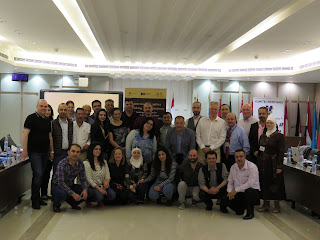Wednesday, August 08, 2018 -  extradition,illicit antiquities,illicit art trade,illicit cultural property,illicit trade in antiquities,illicit trafficking,Italy,Sicily,UK,William Veres
extradition,illicit antiquities,illicit art trade,illicit cultural property,illicit trade in antiquities,illicit trafficking,Italy,Sicily,UK,William Veres
 No comments
No comments
 extradition,illicit antiquities,illicit art trade,illicit cultural property,illicit trade in antiquities,illicit trafficking,Italy,Sicily,UK,William Veres
extradition,illicit antiquities,illicit art trade,illicit cultural property,illicit trade in antiquities,illicit trafficking,Italy,Sicily,UK,William Veres
 No comments
No comments
Sicilian judges reject appeal made by William Veres
 |
| Screenshot of William Veres from the documentary “The Hunt for Transylvanian Gold |
The appeal presented by Limoncello on behalf of Mr. Veres was made to address the personal and real precautionary measures requested by the Italian authorities in relation to his client, deemed necessary by the prosecutor in the context of the criminal proceedings related to the case.
Veres was taken into custody on 4 July by officers from London's Metropolitan Police - Art and Antiques Unit at his home in Forge Close, Stanmore in north-west London. Subsequent to his arrest, Veres was released on bail with supervised release conditions while he awaits the UK's ruling at London’s Westminster Magistrates’ Court as to whether or not he should be extradited to Italy to face the charges against him.
Extradition to Italy is regulated by law as well as by international conventions and agreements. In general, extradition, is this case between Britain and Italy, means that Italy has asked the UK to surrender Veres as a suspected criminal in order to stand trial for an alleged violation of the Italian law. But before doing so, the antiquities dealer is entitled to an extradition hearing.
During that extradition hearing a UK judge will need to be satisfied that the conduct described in the European arrest warrant amounts to an extraditable offence in Great Britain. This means, in almost all cases, that the alleged conduct of the suspect would also amount to a criminal offence were it to have occurred in the UK. The UK courts would also have to evaluate whether or not any of the UK's statutory bars to extradition apply.
Most of the bars prohibiting extradition in the UK have to do with double jeopardy, the absence of a prosecution decision (whether the prosecution case against the accused is sufficiently advanced) or whether or not the request by the requesting foreign authority is improperly motivated. The London judge will also decide if extradition would be disproportionate or incompatible with Veres' human rights.
Should the judge at the extradition hearing decide it would be both proportionate and compatible, Veres' extradition to Italy would subsequently be ordered. Veres could then, if he so chose, ask the UK High Court for permission to appeal this decision, provided that request is made within seven days of the previous order.
If the High Court grants an appeal, in that situation and later affirms the lower court's ruling that extradition is both proportionate and compatible, Veres would become subject to extradition within 10 days of the final court order (unless an agreement to extend, due to exceptional circumstances, is made with Italy).
By: Lynda Albertson
By: Lynda Albertson
































